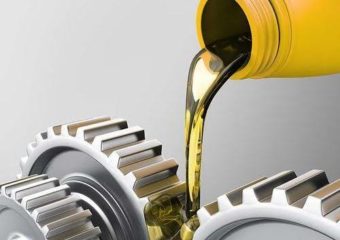Lube oil is extracted from rudimentary oil that undergoes a beginning distillation process which is known as sedimentation before pumping into fractionating towers. A distinctive high competence fractionating tower, 7.6 to 10.6 meters (25 to 35 feet) in diameter and up to 122 meters (400feet) tall, is created of lofty rating steels to oppose the caustic amalgam present in rudimentary oils, contained by, it is integral with an uphill string of condensate collecting trays.
There are about thousands of hydrocarbons in rudimentary oil within towers that are separated from each other by a process known as fractional distillation. As the level of vapours rises up in the tower, the range of incomplete concentrate, cool and return to form of liquid at variant rates which are resolute by their particular boiling points that means the lower the boiling point of the portion, the higher it rises before condensing. Natural gas reaches its boiling point first, followed by kerosene, tars, gasoline, fuel oil and gasoline. There are several lubricant oil manufacturers that provide the best quality lubricant oil from which you can buy as per your requirement.
Sedimentation
The rudimentary oil is transported to refinery by tanker ship or pipeline from oil well. At the refinery, the transported oil undergoes sedimentation in order to eliminate solid contaminants like rock & sand and water that might be suspended into it. During this procedure, the rudimentary oil pumped into large land tanks where oil and water are permitted to divide and the sand contaminants mend out of the oil.
Fractionating
In this procedure, rudimentary oil is heated to about 371 degrees Celsius (700 degrees Fahrenheit). At this particular temperature its breaks down into a mixture of liquid and hot vapour which is then impelled into the bottom of the first of two divided towers. Here, the vapours of hot hydrocarbon float upward. As they cool, they compress and serene in unlike trays installed at variant levels in the tower. In this tower, normal atmospheric pressure is preserved endlessly, and about 82% of the rudimentary oil vaporizes.
The leftover oil (18%) is then reheated and impelled into a second tower, where the pressure of vacuum lowers the boiling point of remaining oil in order to make it vaporize at a lower temperature. The heavier compounds with higher boiling points, such as inorganic compounds and tar, linger behind for more processing.
Filtering and solvent extraction
After the removal of unwanted compounds, the lube oil which is collected in two different towers is conceded through numerous ultrafine filters that eliminate leftover impurities. The extraction of the solvent is possible because fragrant are more soluble in the solvent than the fraction of lube oil.
Additives, inspection, and packaging
After all processing, finally, oil is diverse with additives to give it the preferred physical assets such as the capability to endure low temperatures. At this point, the lube oil is subjected to an assortment of quality control tests that asses its viscosity, flash, fire points, specific gravity, and colour. The oil that passed through the standards of quality then packs for sale.
Author: Growel.com







